Made it across the Cascades! (Part 2, Day 13)
, 9 min, 1795 words
Tags: biking transamerica-2021
Exciting news: I am now past the Cascades! After four (arguably five) passes in four days, in a record-breaking heat wave, I am now just two days from the western terminus of the Northern Tier, Anacortes. I've had some interest expressed in pictures and tales of pre-dawn adventures, so here you are.
Biking in absurd heat
Okay, the elephant in the room: this heat wave. It was a real doozy. Temperatures not just in the triple digits but in the hundred-teens, overnight lows as high as 82, and unrelenting sunshine for days. So, I present to you Zeph's Guide to Not Dying in the Heat.
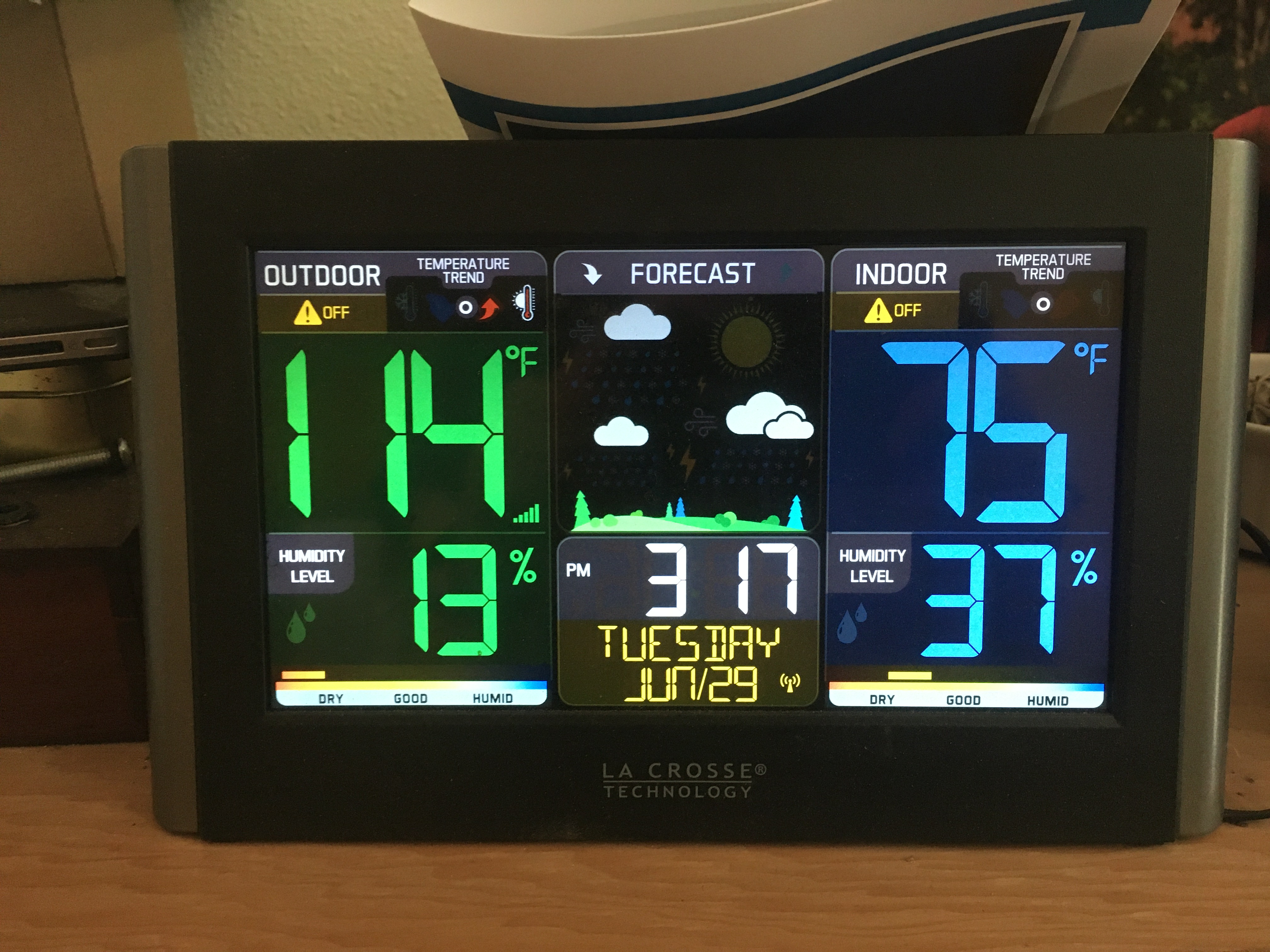
-
If at all possible, just don't bike. Find a nice hotel with a pool, order pizza in, and sit it out. Your everything will thank you.
-
If you have to bike, do it early. Temperatures are lowest at dawn, usually. That means that the further before dawn you can start, the longer you'll get temperatures near the bottom of that temperature sine curve of death. This led to my new theory of starting schedules:
- Leisurely start: you wake up whenever, read a book, prepare a nice breakfast, and hit the road when you feel like it.
- Early start: you wake up at a relatively normal time (5-7am), pack up camp efficiently and get some calories in you, and get riding. This is often aided by truly awful hordes of hungry mosquitoes. My turnaround from wakeup to on the road ranges from 45-75 minutes.
- Dawn start (aka blinky light start): you wake up early enough to be on the road when the sun is rising. Usually this means that 1) you have a bit of light to see by in packing up camp, and 2) once on the road, you'll want your front and rear lights blinking to increase your visibility to cars. Thus "blinky light start".
- Pre-dawn start (aka steady light start): you wake up obnoxiously early (think 3:30am) and are on the road 45 minutes or more before sunrise. This will necessitate a headlamp or lantern, and you'll want your front light to be bright and steady so you can see the road in front of you.
In case it wasn't clear, I've had four (five?) consecutive steady light starts, and now that I'm out of the heat wave I am struggling with a jet lag of 3-4 hours. It also helped that I was able to position myself right before a mountain pass each night, so my highest exertion fell early in the day, when it was still cool out.
-
Find cool places for when not biking. That means air conditioning and cold showers at least during the heat of the day and overnight – rest is important!
-
Know that hydration doesn't just fix all heat illness. No matter how much you drink, you are still vulnerable to heat exhaustion and heat stroke. It helps to give your body ten days to acclimatize to the heat – an hour of exercise in the heat for ten consecutive days triggers literal physiological changes in how you sweat, where your capillaries are, and generally how you can cope with high temperatures. But even that can only get you so far. So you'll need to be aware of the symptoms of heat illness and be ready to change your plans if needed.
-
That said, hydrate! You'll be sweating a LOT, which means you need to replenish those liquids and salts constantly. In practice, you probably can't keep up. So you'll have to play catch up when resting as well, and drink more than you think you need in the mornings before it gets really hot. And generally stay super on top of your body's needs.
-
Consider long-sleeved clothing. For one thing, it reduces your burn risk, which means one less thing to worry about. For another, it's helpful for water-based cooling. And for a third, at a certain point (about 105-110 Fahrenheit), it is actually cooler than short sleeves. This blew my mind. But yesterday in my last 2.5 miles, I tried rolling my sleeves up, thinking "I'm sweating and moving through the air, so this will help cool me off". And it actually didn't. It was hotter with my sleeves rolled up than down. So I now have first-hand experience in why desert nomads around the world have a propensity for loose, light-colored clothing.
-
Take advantage of cooling opportunities when you can. In my case, that means rivers, which thankfully are relatively plentiful in this part of the country. When I see a river, stream, or waterfall, I pull over and assess whether I can safely get to it and submerse some or all of myself in it. In a hurry, I can also dunk my long sleeve shirt in the water, wring it out over my head, and then put it back on. Boom, instant cooling for the next...10-30 minutes, depending on how long it takes to totally dry it out again. I'm guessing this also eases hydration requirements, as that's a little less sweat I have to produce, but I have zero evidence for that. As a bonus, many rivers in this neck of the woods are fed by snowmelt, so they can be very cold. If I'm willing to spare five minutes to just submerge in the water, I notice the effects for as long as ninety minutes afterward. This is also the move if you start to notice symptoms of heat illness, as it's a quick way to stop your core body temperature from increasing and start bringing it back to normal ranges.
-
If possible, just don't bike. Seriously. If I never again bike at temperatures above 100, that is a-okay by me.
Lots of slow pedaling, or The Cascades are incredible
All the heat stuff aside, the last four days have been glorious, incredible, stunning. I have multiple times been so struck by the scenery that I've burst into tears and/or song. But before I share the pretty pictures, a sign to strike fear into the hearts of bikers:
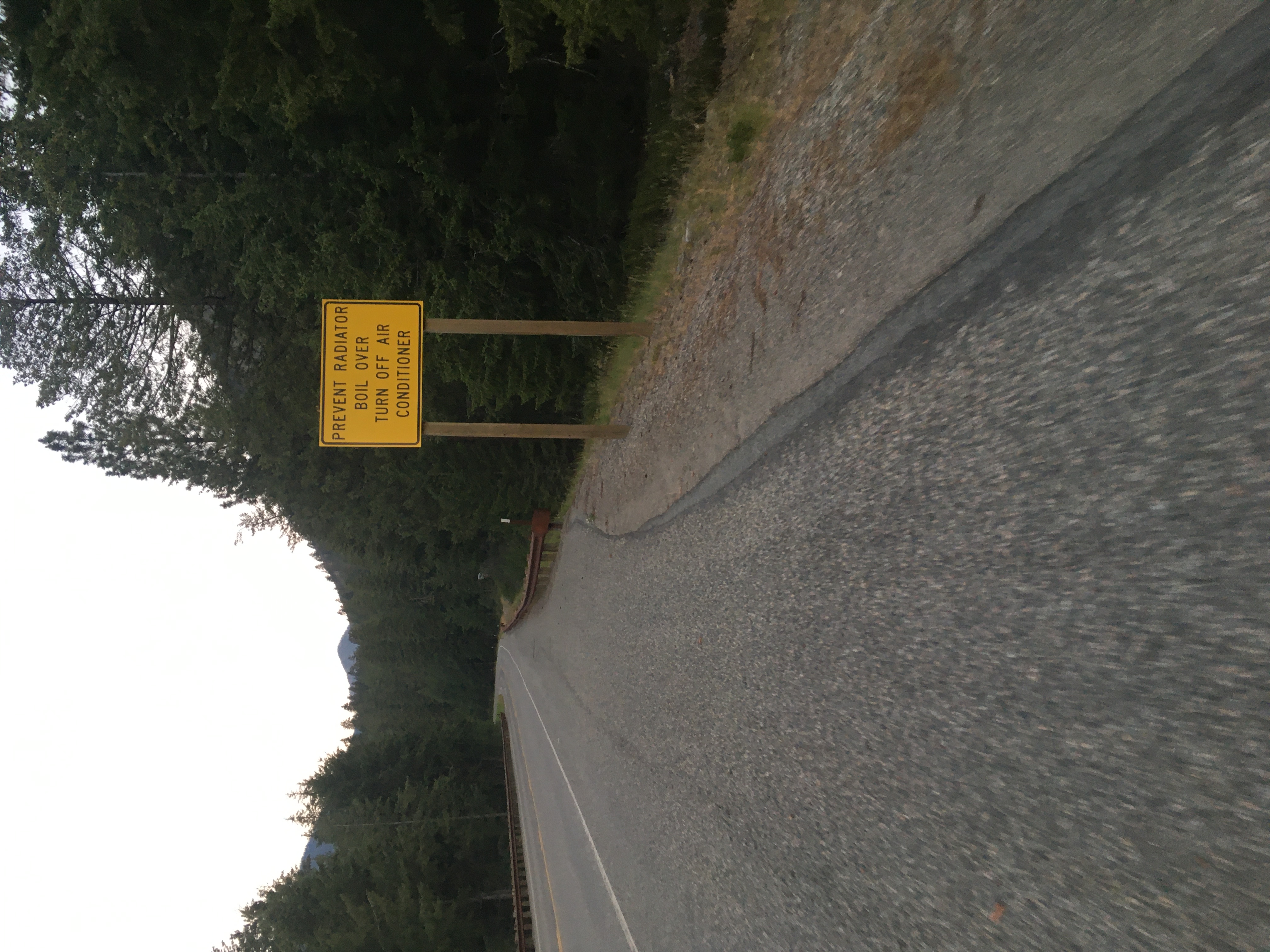
(Big yellow sign reads "Prevent radiator boilover – turn off air conditioner". What do I do if I don't have A/C to turn off?!)
There's a long tradition of pictures in front of the pass signs once you make it to the top, so here are my big four:
Sherman Pass (elevation 5575). 9:20am three days ago
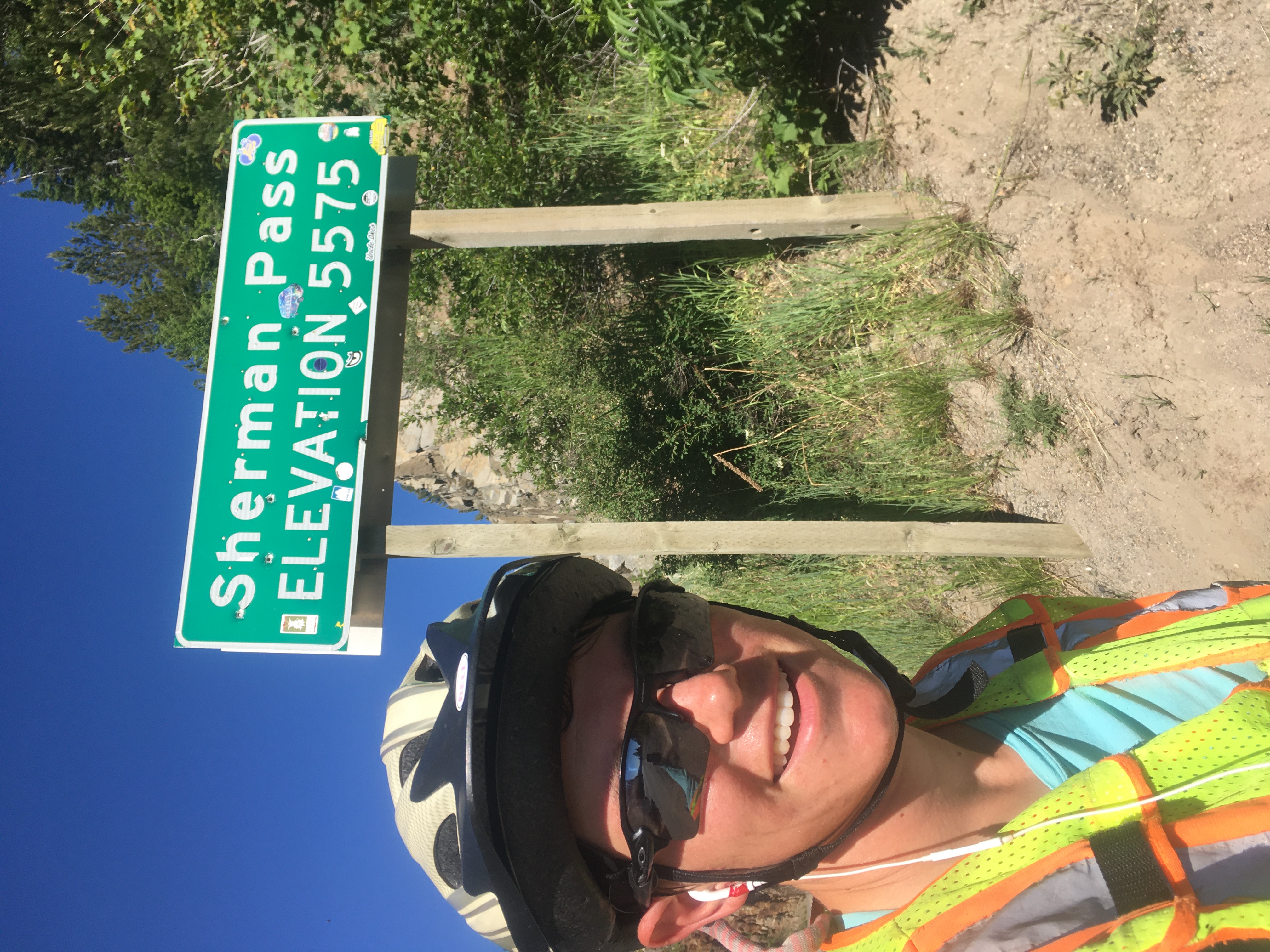
Wauconda Pass (elevation 4310). 6am two days ago
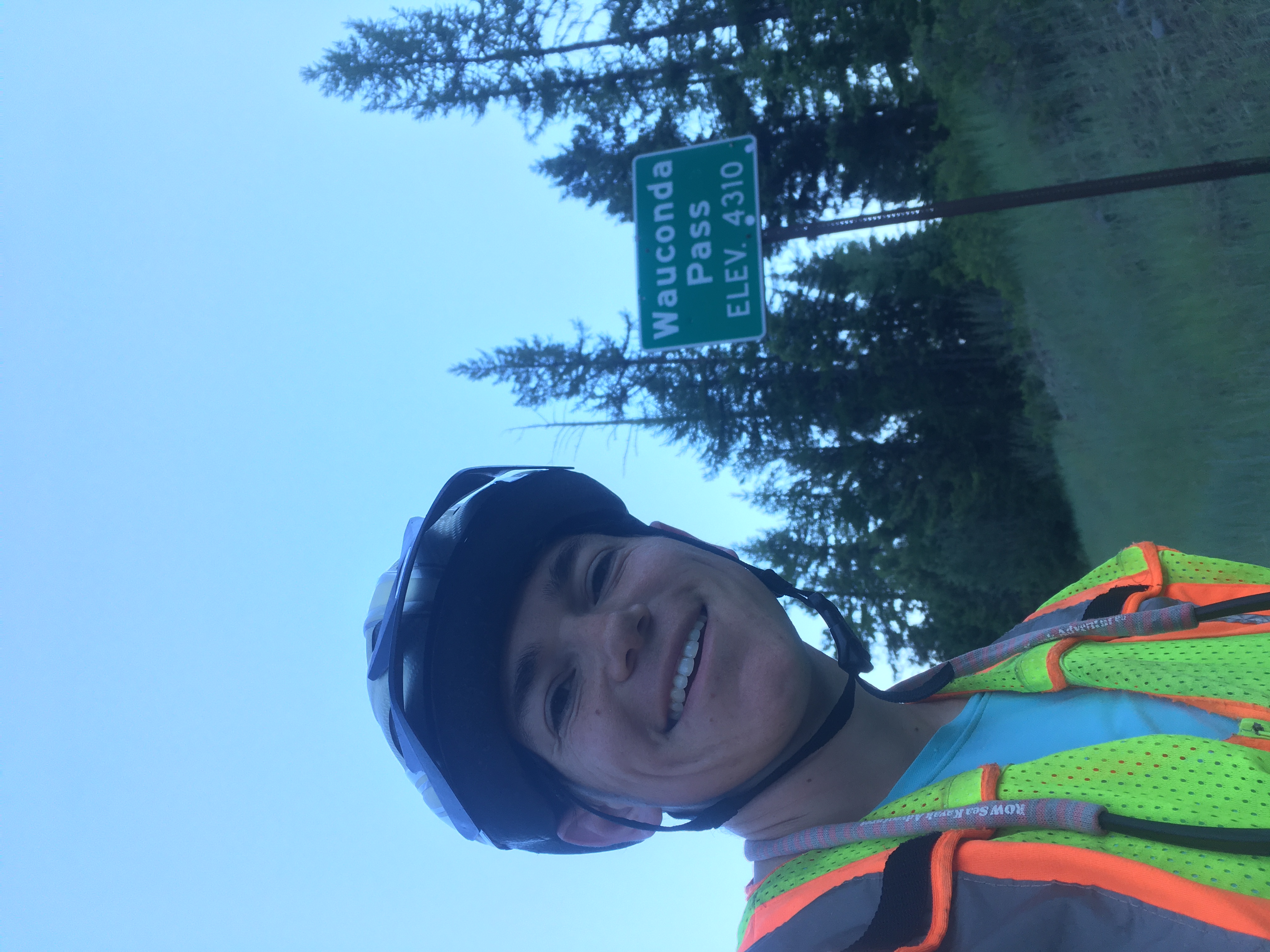
Loup Loup Pass (elevation 4020), 8:10am yesterday
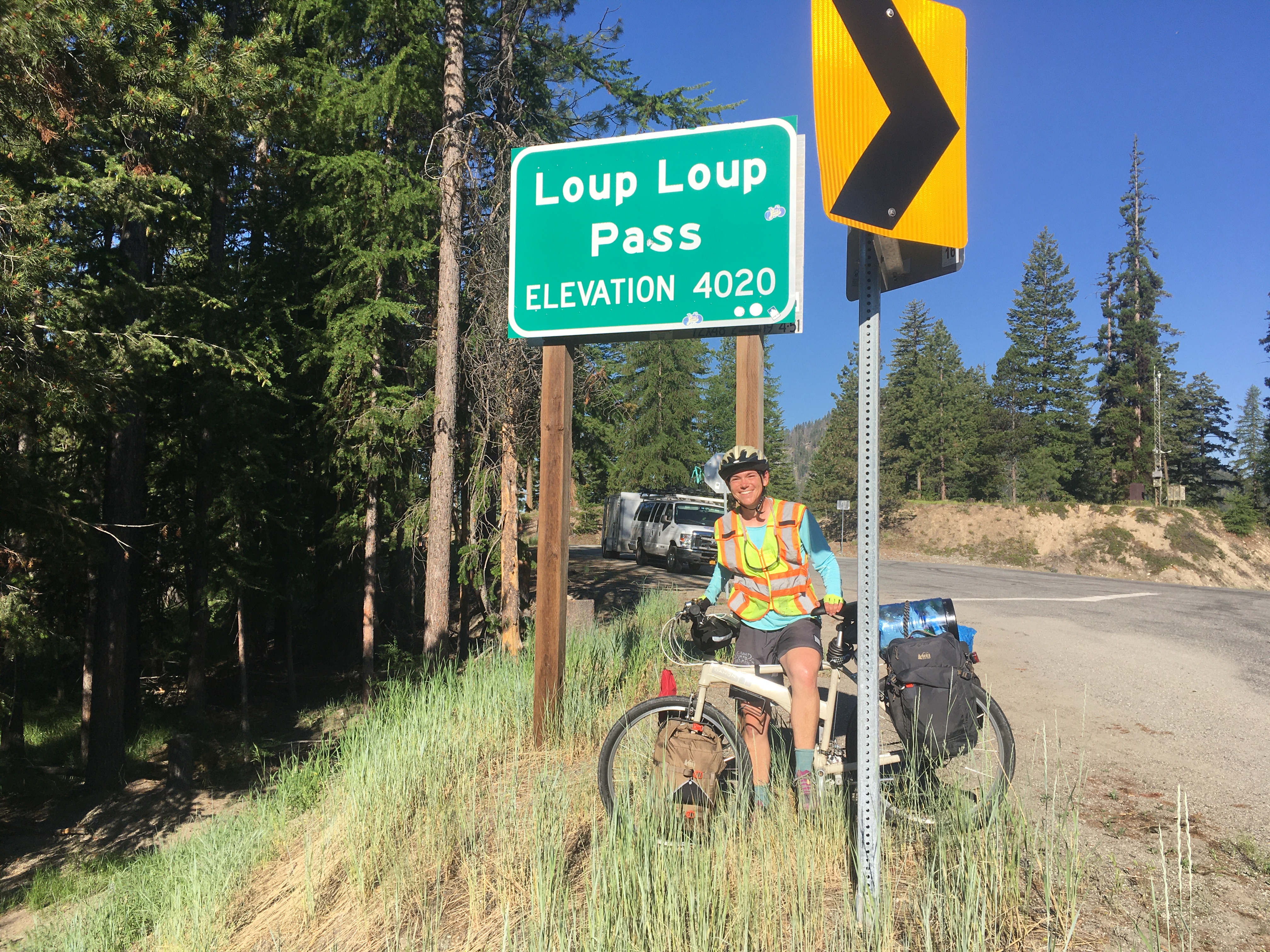
Washington Pass (elevation 5477), 8:10am this morning
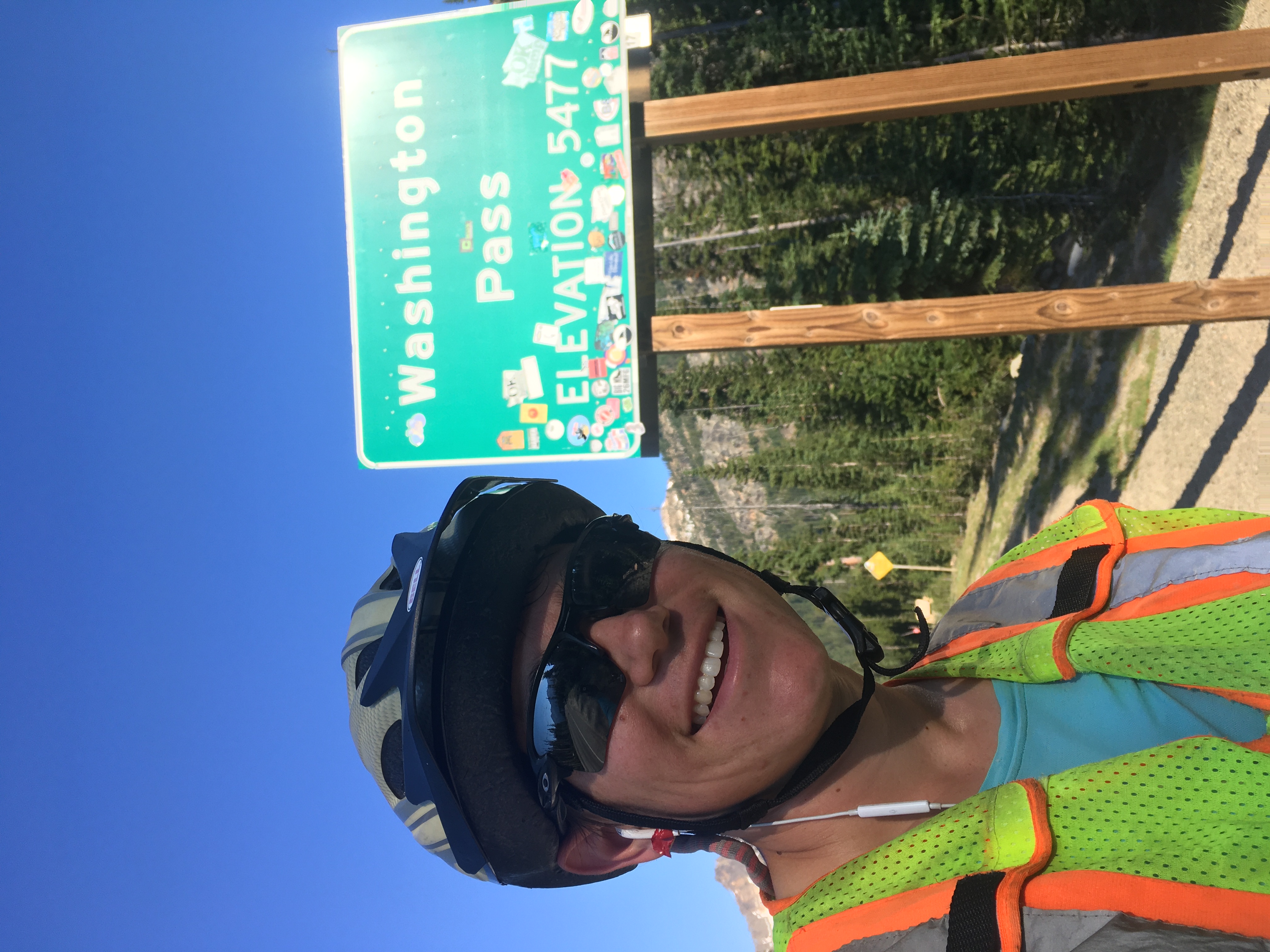
And finally, the pictures you've all been waiting for.
Sunrise over a little ridgeline a couple days ago.
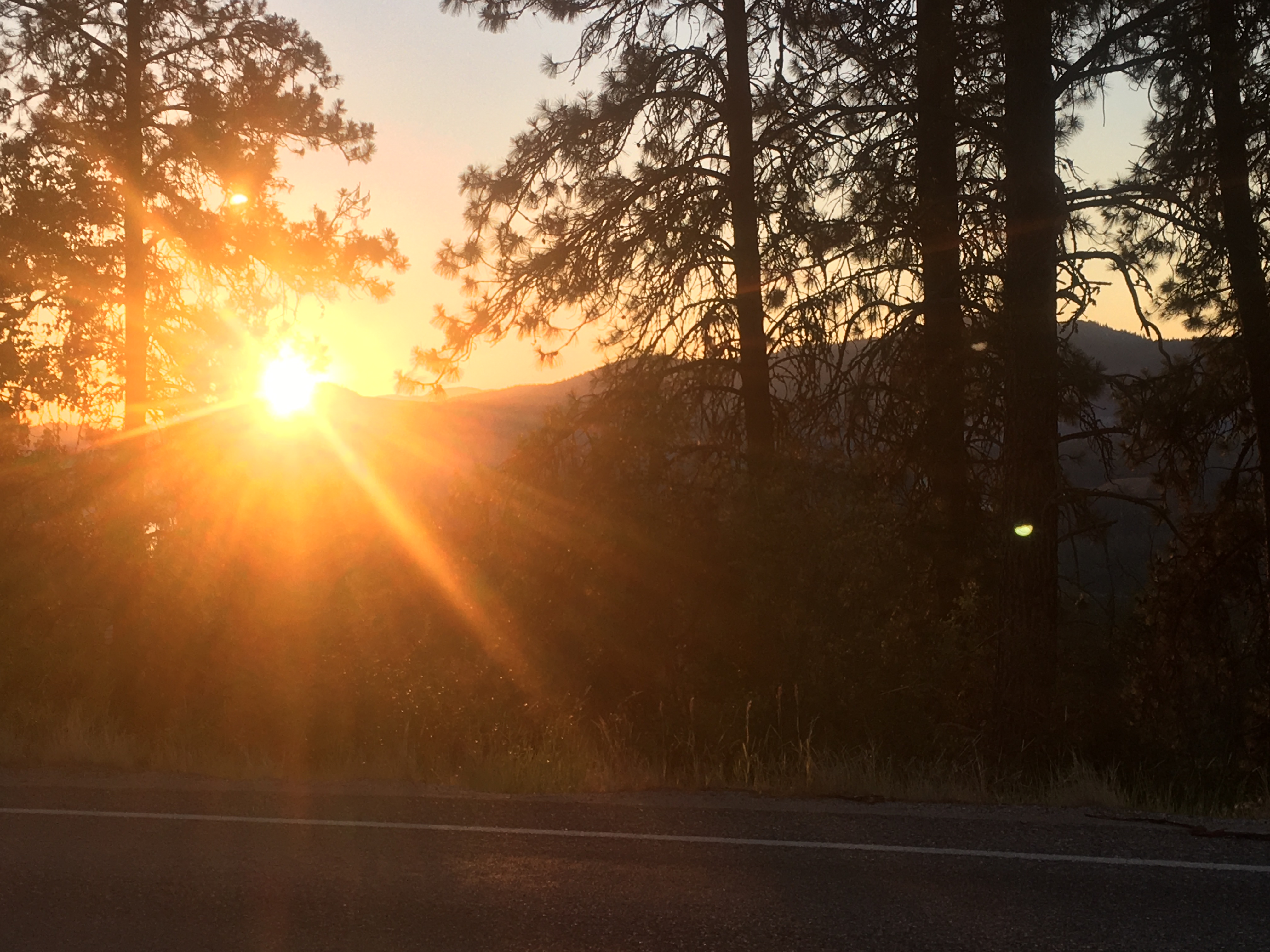
Another (pre-)sunrise, one day more recent. I liked the effect of multiple rows of mountains, getting bluer as they get further away.
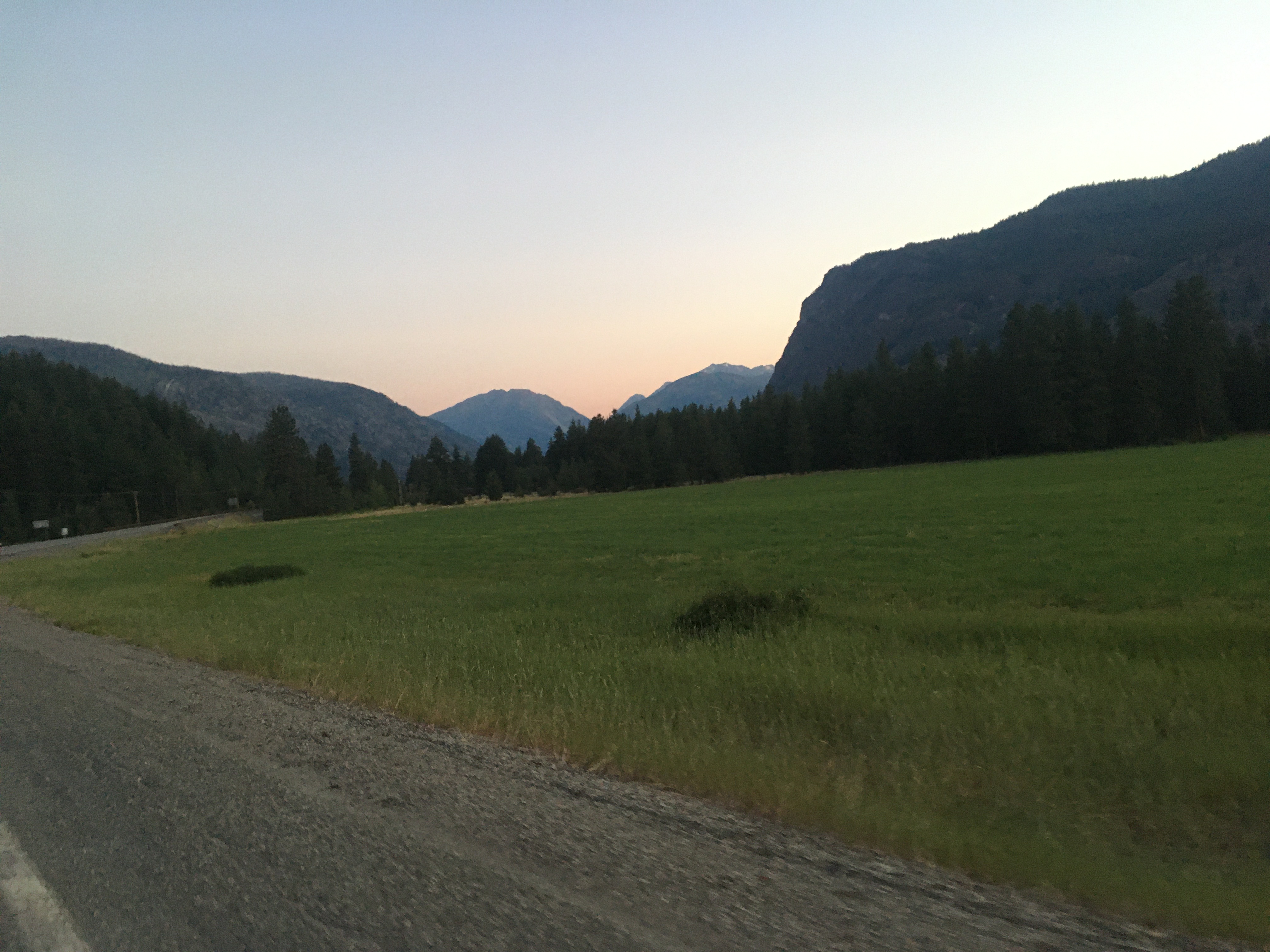
I don't remember the name of this river, or the snowy peak in the background. But the combination was irresistible.
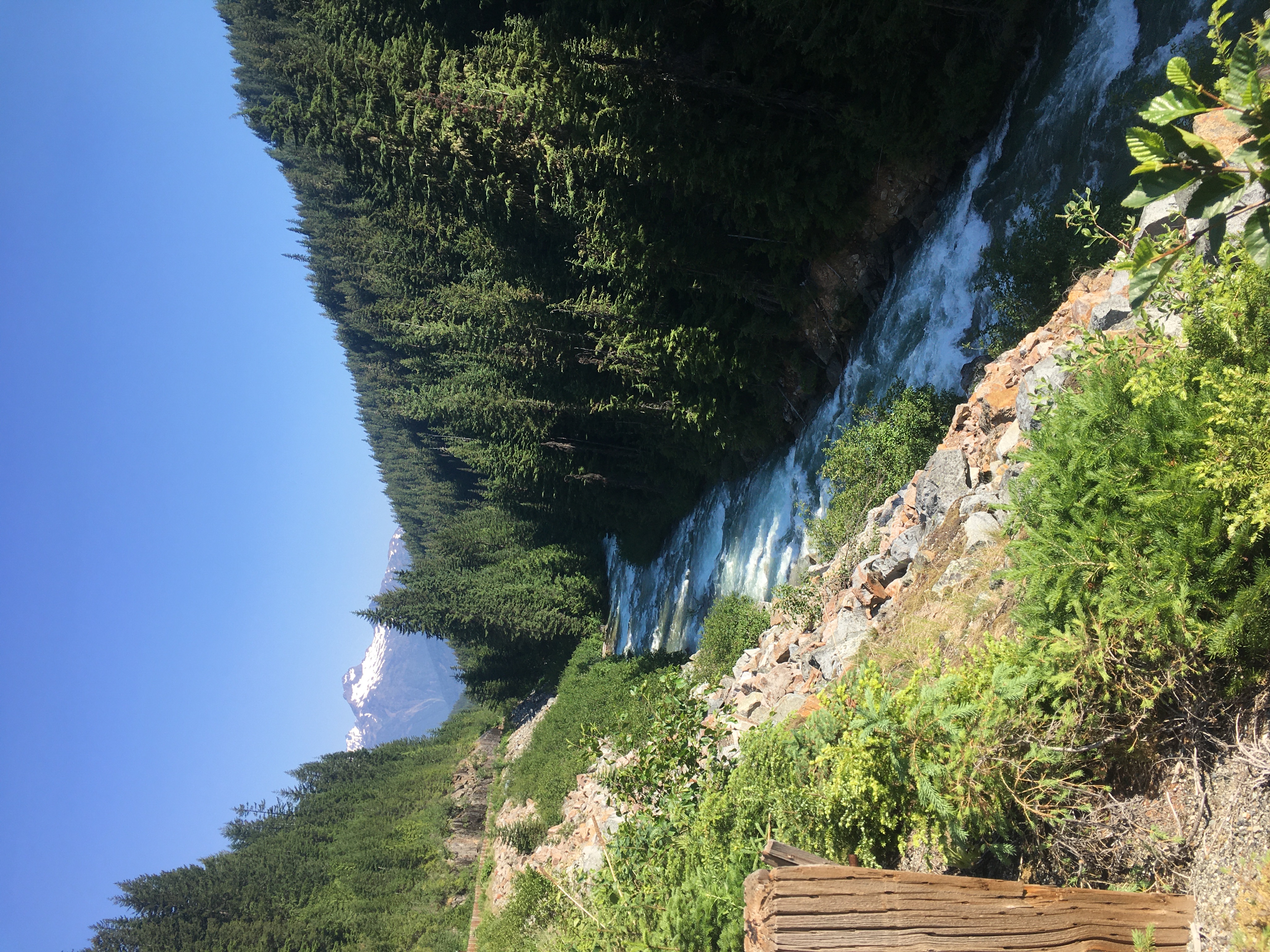
Kindness of strangers, continued
By total fluke, my heat wave pedaling corresponded to a portion of the country with excellent Warm Showers coverage. With just a bit of planning, I was able to find a local host for three consecutive nights. These hosts were kind enough to open their air-conditioned homes to a cyclist smelling of sweat, suffering, and river water. They also went above and beyond, sharing stories and food and politely not minding my request to slip out quietly out before first light. I am incredibly grateful to them all.
Plus I got to meet some absolute badasses:
- A lovely couple experienced with hosting, who came highly recommended (with no prompting by me) by not one but two groups of cyclists I encountered on the road and swapped news with. In the sixteen hours I was there, I was treated to fresh-baked cookies, banana bread, and coffee cake, not to mention hearing countless stories of other cyclists they've hosted. And not content with safely housing one cyclist for the night, they took on another, an eastbound cyclist named Dave who stayed with them years ago on his first trip across the United States. (He later wrote a book about his trip – Descent into Happiness, of which I've read 82 pages and plan to read more.)
- A dad who cycled across the US both east to west and south to north with his wife and two kids on two tandems, with a rule about stopping at every playground along the way.
- Two lovely people whose wooing process involved a lot of local foraging. One described the other as winning them over by sharing a treasured stinging nettle patch. Now they grow just oodles of fruits and vegetables and jar/can/dry them for the winter. Their pantry is a thing of beauty. Oh, and did I mention they are raising meat ducks in their garage?
- A tour group of women over fifty riding eastward from Anacortes to Fargo, North Dakota. They were in good spirits despite meeting them at the top of Loup Loup Pass, a real climb. I hope to someday be as impressive as them. Their guides were also lovely and shared their Gatorade with me.
- A carpenter who learned the trade first from library books and then an apprenticeship, and has since build his own house. Incidentally, it closely approximates my ideal cabin. takes notes